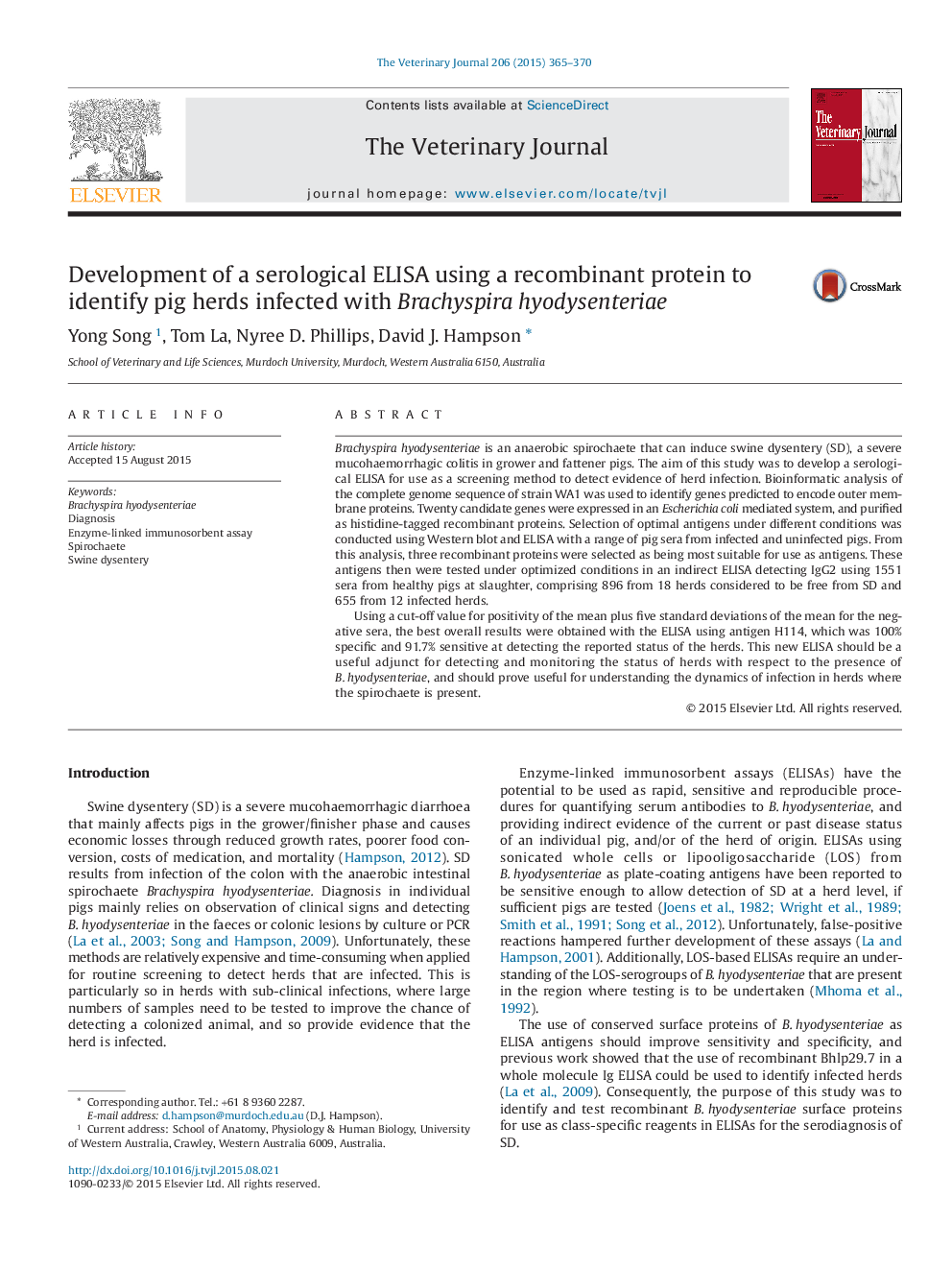| کد مقاله | کد نشریه | سال انتشار | مقاله انگلیسی | نسخه تمام متن |
|---|---|---|---|---|
| 2463791 | 1111749 | 2015 | 6 صفحه PDF | دانلود رایگان |

• A new ELISA was developed for detecting pig herds infected with Brachyspira hyodysenteriae.
• Under optimized conditions the test had 100% specificity and 91.7% sensitivity.
• The new test should be useful for screening herds for evidence of swine dysentery.
Brachyspira hyodysenteriae is an anaerobic spirochaete that can induce swine dysentery (SD), a severe mucohaemorrhagic colitis in grower and fattener pigs. The aim of this study was to develop a serological ELISA for use as a screening method to detect evidence of herd infection. Bioinformatic analysis of the complete genome sequence of strain WA1 was used to identify genes predicted to encode outer membrane proteins. Twenty candidate genes were expressed in an Escherichia coli mediated system, and purified as histidine-tagged recombinant proteins. Selection of optimal antigens under different conditions was conducted using Western blot and ELISA with a range of pig sera from infected and uninfected pigs. From this analysis, three recombinant proteins were selected as being most suitable for use as antigens. These antigens then were tested under optimized conditions in an indirect ELISA detecting IgG2 using 1551 sera from healthy pigs at slaughter, comprising 896 from 18 herds considered to be free from SD and 655 from 12 infected herds.Using a cut-off value for positivity of the mean plus five standard deviations of the mean for the negative sera, the best overall results were obtained with the ELISA using antigen H114, which was 100% specific and 91.7% sensitive at detecting the reported status of the herds. This new ELISA should be a useful adjunct for detecting and monitoring the status of herds with respect to the presence of B. hyodysenteriae, and should prove useful for understanding the dynamics of infection in herds where the spirochaete is present.
Journal: The Veterinary Journal - Volume 206, Issue 3, December 2015, Pages 365–370